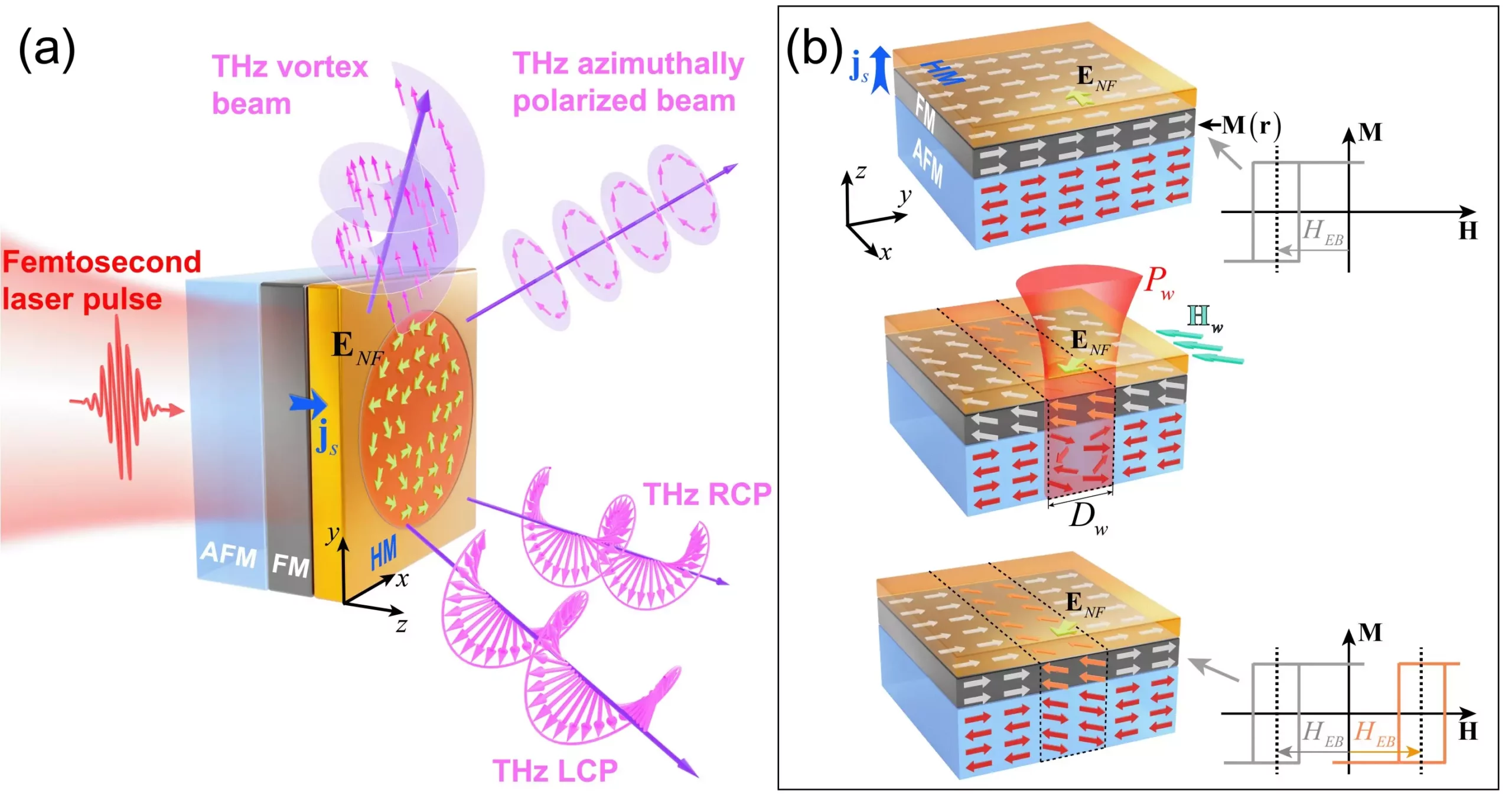Recent advancements in the field of terahertz technology have heralded a new era propelled by the innovative use of programmable spintronic emitters. Researchers, predominantly hailing from esteemed institutions such as Fudan University and Capital Normal University, have achieved a remarkable feat: effectively producing structured terahertz light beams that can be finely manipulated. This breakthrough represents a significant milestone for scientists and engineers, positioning them to explore previously unattainable applications in diverse fields ranging from communications to medical imaging.
Understanding the Significance of Terahertz Radiation
Terahertz radiation occupies a unique segment of the electromagnetic spectrum, lying between microwaves and infrared light. Despite its potential for impactful applications, including high-resolution security scanners and advanced imaging technologies, the practicality of generating and controlling terahertz light has presented considerable challenges until now. The recent research, which centers on the manipulation of light at terahertz frequencies, solves critical issues related to beam generation and control, unlocking unparalleled opportunities for innovation across several domains.
Innovative Methodologies: The Role of Programmable Spintronic Emitters
At the heart of this advancement is the integration of magnetic multilayers, which are essential components in spintronic devices. These programmable emitters leverage the properties of both magnetic and non-magnetic materials through intricate engineering to produce spin-polarized currents that subsequently generate broadband terahertz radiation. According to Shunjia Wang, a graduate student and the article’s lead author, the team’s ability to manipulate magnetization patterns with precision is revolutionary. The result is the capability to produce terahertz beams with multiple polarization states, enabling the design of light with complex spatial attributes.
Expanding the Frontiers of Photonics with Unique Polarization States
The introduction of intricate polarization state configurations, such as circular polarizations and radial polarization states, marks a pivotal moment in the ongoing quest for enhanced optical capabilities. Notably, the creation of a Poincaré beam, capable of encompassing a spectrum of light polarization states within its profile, offers intriguing possibilities. Applications ranging from special optical forces in trapping and manipulating small particles to performing advanced single-shot polarimetric measurements will likely benefit from these innovative beams.
Potential Impact on Future Terahertz Technologies
As researchers demonstrate the successful generation of various structured terahertz light beams, they open the floodgates to a realm of enhanced functionalities within terahertz devices. With the capability for flexible programming, the versatility of these emitters will allow for the customization of terahertz light to meet specific practical needs across diverse applications. Prof. Zhensheng Tao’s insight that this innovation “paves the way for the development” of novel technology encapsulates the transformative possibilities that lie ahead.
The intersection of spintronics and terahertz technology not only enhances existing applications but also inspires new avenues of research and development. By harnessing structured light in this manner, researchers are poised to make significant contributions to both the scientific community and practical technological advancements, ushering in an exciting era characterized by innovation and discovery.


Leave a Reply